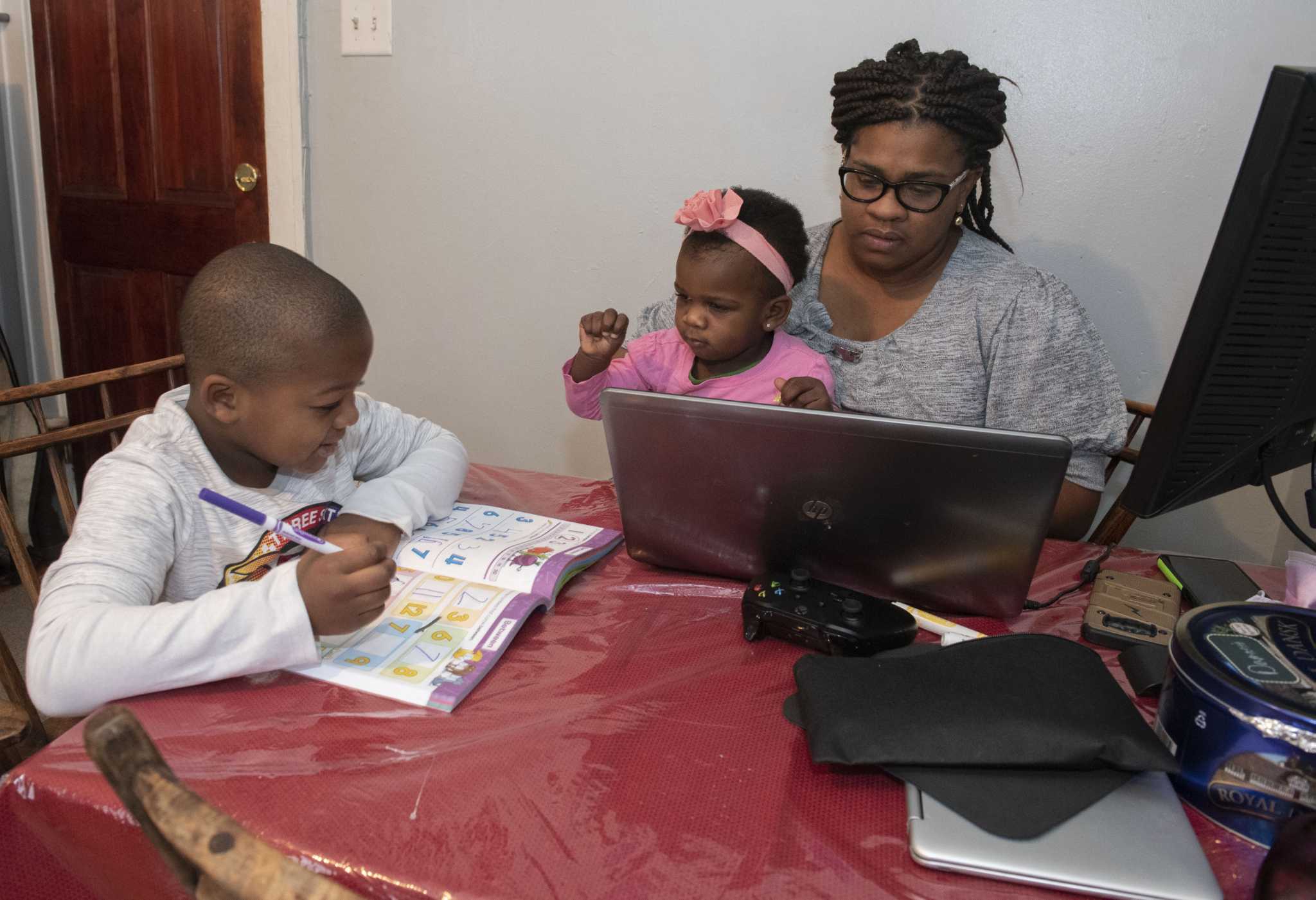It was 2020. Damaris Skelton was in a hospital room preparing to give birth to her daughter as she filled out forms for a new job and confirmed her application submission.
“I wanted to work. I wanted to make my own money and be able to contribute and do something in my field, ”she said. “It was something I knew I just had to put on my mind, that’s what I wanted to do.”
When the pandemic set in about two years ago, Skelton quit her job at Albany Medical Center and retired to her home to care for her children while the country was in lockdown.
Her days became a cycle of PlayDoh, arts and crafts, weekly Zoom calls with her children’s playmates, and regular activities outside to stay active.
About a year later, she became one of some 872,000 women over the age of 20 in the United States to re-enter the workforce.
Yet these days, she still finds herself caring for a crying toddler or baby while trying to take a call at work. Dealing with work deadlines with homework makes her feel overwhelmed, but she said the thought that she should have refrained from returning to work never occurred to her.
“I knew I was ready to return to the workforce,” she said. “It’s not that type of situation forever and we’re just going to make the most of it.”
In 2020, about 130,000 more women were new to the workplace while about 296,000 left their jobs, according to data from the United States Bureau of Labor Statistics.
Data from the bureau further showed that 44.5% of re-entrant women over the age of 20 spent 15 weeks or more away from the workforce. Among men in the same category, 46.6 percent spent the same time unemployed.
The data also determined that more men than women left their jobs in 2020, although more women are re-entering the workforce.
Skelton returned to the workforce partly to help support her children and because she needed do it for herself.
“I just felt like I needed to go back there to even have my own sense of myself and my own purpose besides being a mother,” she said. “I like to work.”
Skelton said she was fortunate enough to land a position at MicroKnowledge, a company that has supported her throughout the reintegration process and continues to do so.
Elizabeth Miller Guthier, executive director of the Capital District Women’s Employment & Resource Center, said many women leaving the workforce are “traditional displaced housewives,” women who left to care for children or of their relatives. They often remain unemployed for one to 20 years.
WERC has 12 displaced homemaker programs across the state that help women successfully return to the workplace. The organization serves more than 300 women a year and has seen an increase in calls during the pandemic, according to Guthier.
Women who return after being left out of the mix for long periods of time face many challenges. Finding a job, preferably one that understands that people are multifaceted beings fulfilling a number of roles, is only part of the pie.
Women also need to organize childcare services, reorient themselves to new work environments and update their skills while developing the confidence to enter the labor market.
WERC helps women with everything from updating application materials to obtaining advice, acquiring technological knowledge and securing employment.
For Skelton, finding a daycare was the most difficult challenge; everything else she succeeded. After more than a year of working remotely, she still hasn’t found the care she needs.
“Child care is just insanely expensive in New York City or (there are) not a lot of places that actually have child care in the Albany area,” she explained.
Kimberly Suminski, executive director of the Child Care Resource Network, said Skelton’s predicament was common.
The child care industry has “degenerated into a crisis,” according to Suminski. Families spend an average of about 13% of their income on childcare, and more than a third of providers are considering leaving the business, she noted.
The majority of parents who call the Child Care Resource Center for help are women seeking help so they can return to work.
“Women are the ones who have had to leave the workforce and stay at home. Women have suffered the brunt of the professional shock… with the closure of schools and daycares, ”said Suminski.
Although remote working has made it possible for more women to remain employed, they still face a disconnect from camaraderie in the workplace and are exhausted from being pulled in different directions.
“If we continue down this path, it is the women who will really take the hit and continue to be unable to re-enter the workforce,” Suminski said.
She also found that women are more likely to waste career time and financial drain by taking time off and potentially losing the chance to contribute more to their retirement savings.
Skelton works with what she has to balance her work with motherhood.
“I just don’t have enough time, but who feels like I have enough time?” She said.




